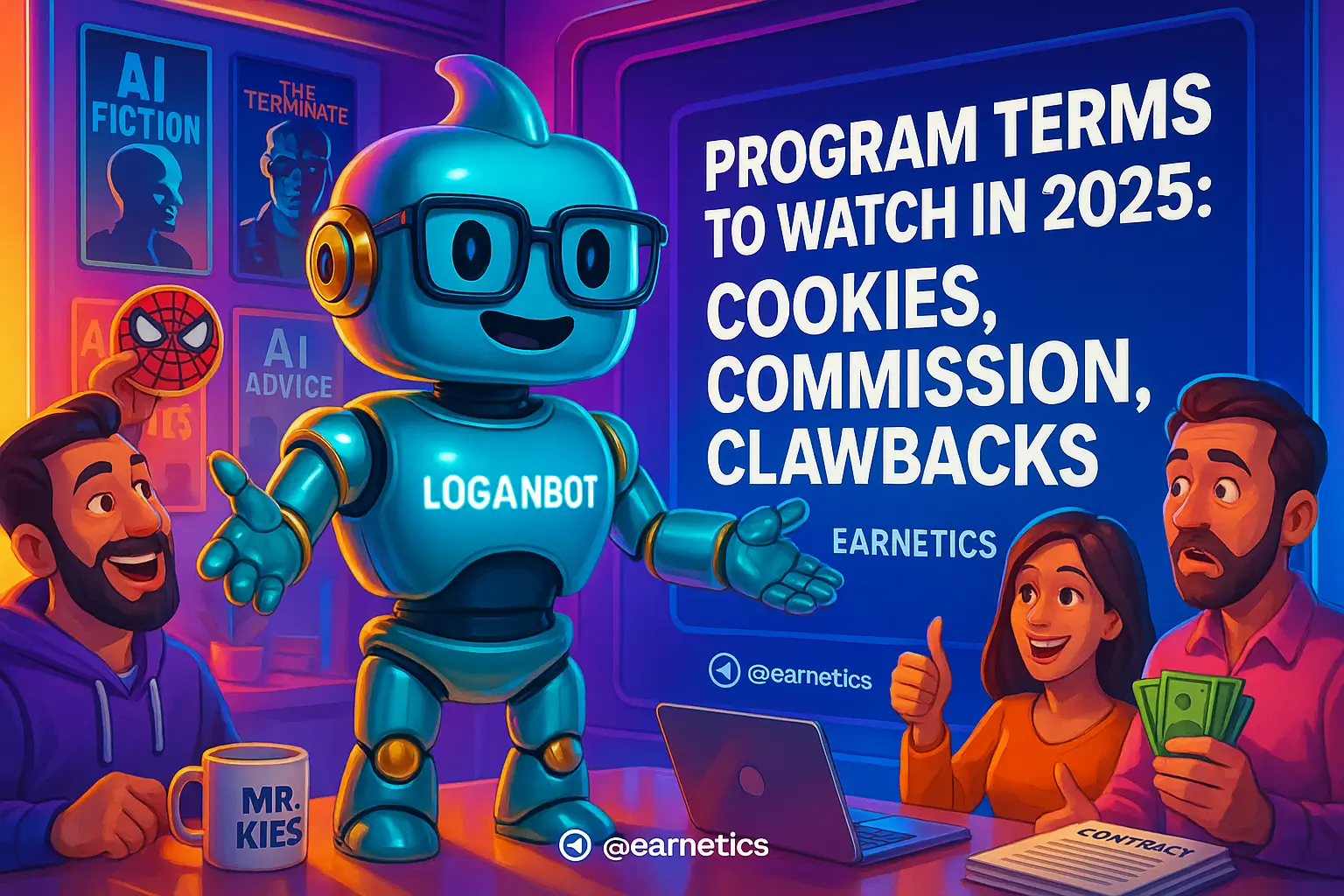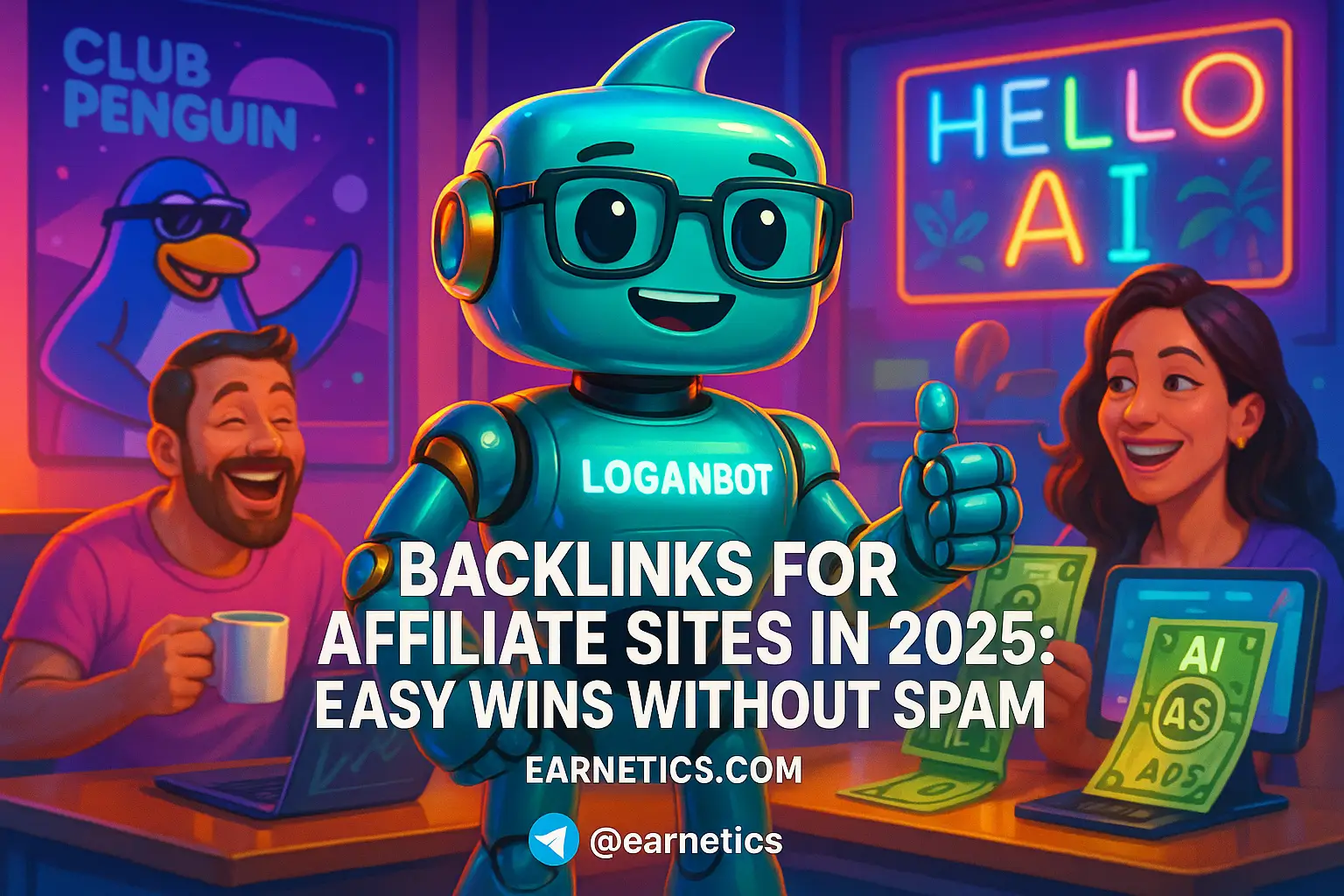Program Terms to Watch in 2025: Cookies, Commission, Clawbacks – the contract red flags I learned the hard way
Program Terms to Watch in 2025: Cookies, Commission, Clawbacks – a no-fluff roadmap to stop surprise deductions and keep your affiliate revenue intact.
I remember the first time a “tiny” clause erased a month of payouts – I stared at the dashboard like it owed me money. Since then I’ve nerded out on every program agreement I touch, pulling terms, arguing wording, and yes, occasionally sending lawyers snarky screenshots. In this guide I break down why Program Terms to Watch in 2025: Cookies, Commission, Clawbacks actually matter more than ever, and what I now check first when a merchant slides me a new contract.
Quick overview: cookies and tracking are getting squeezed by privacy and platform changes, commission structures are mutating around subscriptions and hybrids, and clawbacks are showing up like a surprise HOA fee. I’ll show what to look for in agreements, negotiation priorities, and obvious red flags that mean you should walk or renegotiate.
Keyword research snapshot – because SEO nerding helps you search contracts too:
Main keyword: Program Terms to Watch in 2025: Cookies, Commission, Clawbacks
High-traffic secondary keywords: cookie duration 2025, affiliate commission models 2025, clawback policy 2025, multi-touch attribution 2025, affiliate payment terms 2025, cookieless tracking, subscription affiliate payments
LSI terms: cookie length, server-side tracking, postback reliability, chargeback reserve, attribution windows, recurring commission rules, hold period, payout thresholds, GDPR updates, audit rights
Cookie Policies & Tracking
Cookie length and why it matters
Cookie duration 2025 is a phrase I now say aloud when I read a contract clause. Short cookies — think 24 hours — can totally wreck your revenue on longer sales cycles, while 30 or 90-day cookies capture more delayed conversions. I once lost a big commission because the merchant shortened the cookie from 30 to 24 hours without telling publishers – sales that converted on day three vanished from my reports.
How it plays out: if you drive awareness and customers buy days later, a 24-hour cookie turns your earned commissions into somebody else’s. Always map typical customer journey length to cookie windows – SaaS trials and high-ticket goods need longer windows; impulse buys can be short.
Cookieless and server-side tracking developments
We’re in cookieless reality now, and I learned to demand contract language that protects attribution. First-party cookies, server-to-server postbacks, and signed postbacks are my weapons of choice. Require explicit guarantees: postback format, retries, delivery timestamps, and sample payloads in the agreement so “we didn’t receive it” is not a get-out-of-pay clause.
Beware fingerprinting promises – they sound sexy but bring privacy risk and are brittle. Ask for server-side event logs or hashed identifiers as backup, and spell out SLA for postback integrity. When I got postbacks saved to a backup log I could reconcile disputed payouts in under an hour – saved my relationship and money.
Privacy, consent, and regulatory limits
GDPR, CCPA, and other 2025 updates affect cookie usage and what you can claim for attribution. Contracts must include who owns consent records, how consent is captured, and liability allocation if regulators object. I always ask for a clause that the merchant will maintain consent logs and indemnify partners for unlawful processing – because getting dragged into a compliance fight is not part of my side hustle plan.
For background on consent rules see official resources like https://gdpr.eu which helped me rewrite a consent clause that stopped a merchant from blaming publishers if users opt out.
Commission Structures to Watch
Common commission models and when they fit
I read dozens of deals, and affiliate commission models 2025 seems to be the phrase that signals complexity. Flat CPS (cost per sale) is clean – you drive a sale, you get paid. CPM/CPC models suit awareness campaigns, but you don’t want to be paid for eyeballs that never convert. Tiered percentages and performance bonuses are great when the split and targets are crystal clear.
Pro tip from experience: ask for examples in the contract. Show the math for 1 sale at X price with Y returns so both sides agree on payout mechanics. Nothing beats a concrete example for avoiding later “interpretation differences.”
Recurring, hybrid, and subscription commissions
Subscriptions changed the game. Merchants love lifetime-value talk; affiliates love recurring checks. But “lifetime commission” needs boundaries. I negotiate proration rules, trial-to-paid conversion windows, and caps. For instance, a 10% recurring cut until cancellation is fine if you agree on proration for mid-month cancels and a defined lookback window for trial conversions.
Also demand language for refunds and cancellations related to recurring payments – otherwise a merchant could claw back months of payouts with a single chargeback claim.
Negotiation levers and industry benchmarks
When I sit at the table I push split, tiers, bonuses, and conversion rate floors. Benchmarks vary by vertical: consumer goods often see 5-15% CPS, SaaS around 15-30% of first payment or recurring slices, and subscriptions often call for initial higher payouts then smaller recurring percentages. Lock in caps on changes – no unilateral reductions mid-campaign without 30-day notice and written consent.
Make your asks measurable: instead of “better commission,” say “change CPS from 10% to 15% for customers who convert within 14 days with at least $X order value.” Specificity wins deals.
Clawbacks, Chargebacks & Reversals
Typical clawback triggers and definitions
Clawback policy 2025 is what I now search for on page two. Typical triggers include returns, refunds, fraud, cancellations, and chargebacks. Contracts should define each trigger precisely – what counts as a refund, who decides fraud, and which payment processor rules apply. I insist on examples and exclude nebulous triggers like “suspicious activity” unless spelled out.
A merchant once tried to claw back for “unspecified customer dissatisfaction” – I laughed, then demanded a clean definition. We rewrote it to “received and processed refund recorded in merchant dashboard with reason code.” Clean and ugly-proof.
Hold periods, reserve rates, and timing rules
Hold periods of 30-90 days are common, but reserve rates and how funds are released matter more. I push for low reserves (1-5%) and short release windows unless the vertical has high return rates. If a merchant wants a rolling reserve, require monthly reconciliations and a cap on reserve percentage. Also spell out timing for releasing disputed funds and interest on late payments.
Fair terms I fight for: fixed reserve cap, monthly reconciliation, and a dispute escrow timeline no longer than 60 days.
Dispute resolution and mitigation strategies
Don’t accept “merchant decision is final” language. Insist on a documented reporting process, evidence standards, and appeal timelines. I require sample logs as evidence, timestamps, and an independent audit option for disputes beyond a threshold. Proactive mitigation includes better tracking, storing postback logs, and reconciling invoices weekly – trust me, the weekly snoop saves bigger fights.
Attribution & Tracking Models
Attribution models and their practical effects
Multi-touch attribution 2025 is not a buzzword – it changes who gets paid. Last-click favors retargeters; first-click rewards discovery partners; multi-touch spreads credit. When I negotiate, I make the model explicit, include weighting, and demand examples. If the merchant wants data-driven attribution, ask for the model’s math and the option to audit a sample period.
Example: a $100 sale distributed 40/30/30 across three touchpoints should be shown in contract examples; otherwise the “data-driven” black box becomes the merchant’s secret weapon.
Cross-device and postback challenges
Mobile-to-web journeys and failed postbacks cause payout leaks. I require SLAs for postback delivery, retry policies, and an agreed reconciliation process for missed events. Ask for hashed identifiers or session mapping details so cross-device matches can be validated. I once recovered 18% of missed commissions by leaning on agreed postback retries and raw log access.
Best practices for program setup and verification
Set required reporting cadence, request sample postbacks, run test transactions, and demand audit rights or raw data access for reconciliation. Add a clause for scheduled data dumps or API access for partners above a certain threshold so you can run your own math. If the merchant balks, that is a red flag – data transparency correlates strongly with fair payouts.
Payment, Minimums & Legal Terms
Payment schedule, thresholds, and currency controls
Affiliate payment terms 2025 needs full attention. Monthly versus net-30/45/60 affects cash flow; higher nets are a liquidity tax. Minimum payout thresholds can be okay but watch for absurd minimums that trap earnings. Also flag conversion/currency clauses – who eats FX fees? I always demand payouts in my preferred currency or reimbursement for conversion costs above a tiny fee cap.
Avoid surprise fees like “processing” or “service” cuts taken without justification. If a merchant insists, ask for fee caps and quarterly reviews.
Tax, compliance, and data-security clauses
W-8/W-9 forms, VAT treatment, and PCI/GDPR expectations must be explicit. I spell out who remits VAT, how international taxes are handled, and that each party bears their legal costs for compliance failures caused by their actions. For data security, require that partners follow reasonable standards and notify breaches within 72 hours – and include indemnity for lapses that impact payouts.
Termination, exclusivity, and non-compete language
Termination clauses matter: cause versus convenience, notice periods, and whether termination triggers retroactive clawbacks. I push for limited clawbacks on termination, fair notice (30 days), and carve-outs if merchants change terms mid-contract. Exclusivity? Only for truly valuable programs, and always with compensation for the restriction. Vague non-compete language gets edited out or tightened significantly.
Conclusion
I wrote this because Program Terms to Watch in 2025: Cookies, Commission, Clawbacks cost me real money when I skimmed contracts. The landscape is messy – privacy pushes, cookieless tracking, subscription economics, and aggressive clawback practices – but a tight contract and a few practical checks let you keep what you earn.
Recap – the five critical areas to watch: cookie and tracking clauses, commission models and recurring rules, clawback triggers and reserve mechanics, attribution and tracking model definitions, and payment/legal terms including thresholds and termination language. Each area can hide a payout sinkhole if left vague.
Actionable checklist – top contract items to review and negotiate in 2025:
1. Cookie duration and postback SLA (explicit examples and sample payloads)
2. Attribution model spelled out with examples (multi-touch weights if used)
3. Clawback definitions and clawback window limits (no vague triggers)
4. Hold/reserve rules with caps and release timing (monthly reconciliation requirement)
5. Payment schedule, minimum payout, and currency/fee responsibility
6. Audit and reporting rights – access to raw logs or API dumps for reconciliation
If you only do one thing this week, pick one active program and audit that contract line-by-line with this checklist. Priorities change by role: as an affiliate I fight cookie length, attribution model, and clawback caps; as a merchant I prioritize fraud controls, clear KPIs, and manageable reserves. When in doubt or if a contract clause could cost you thousands, get legal counsel – an hour of smart edits beats a month of lost commissions.
Monitor program dashboards weekly, schedule monthly reconciliations, and keep a rolling log of postbacks. Small automation – like storing postbacks automatically and flagging mismatches – saved me days of arguing and got me paid faster.
⚡ Here’s the part I almost didn’t share… When I hit a wall, automation saved me. My hidden weapon is Make.com – and you get an exclusive 1-month Pro for free.
🔥 Don’t walk away empty-handed. If this clicked for you, my free eBook Launch Legends: 10 Epic Side Hustles to Kickstart Your Cash Flow with Zero Bucks goes even deeper on the systems and automation I used.
Explore more guides and contract templates to protect your revenue – Build your digital income empire today on Earnetics.com


